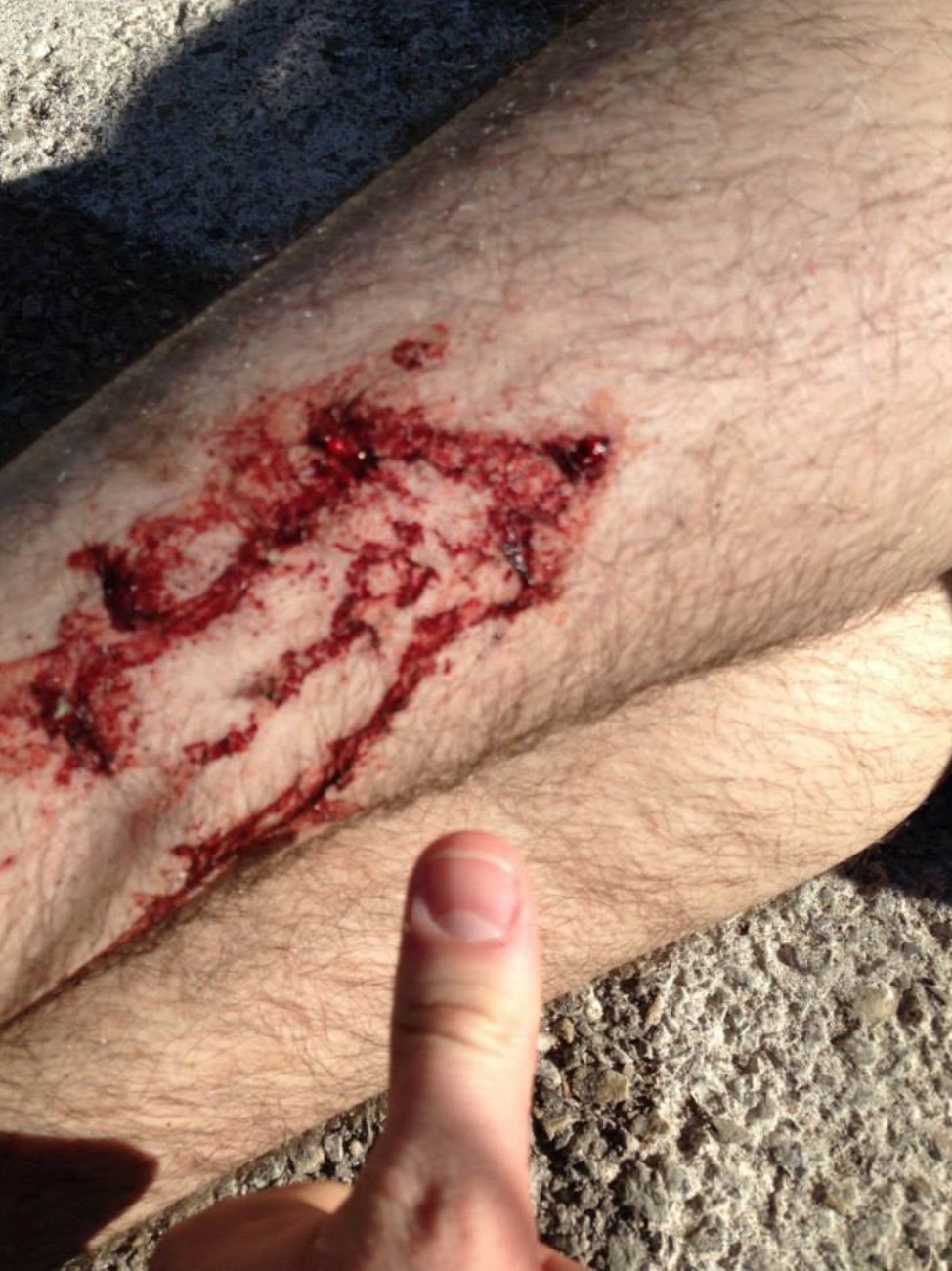
After a poisonous snake bite, CrossFit athlete Anthony Kemp treks 45 minutes for medical attention, flat-lines three times, receives 32 doses of antivenin and lives.
A rattlesnake bite nearly claimed Anthony Kemp’s life. He survived minus one limb, an amputation he calls “a paper cut.”
On Feb. 7, 2015, 23-year-old Kemp set out on a hike with two fellow Marines. They had just PR’d their back squats and felt a celebration was in order, so they drove to the Wichita Mountains Wildlife Refuge, a beautiful 59,000-acre expanse that sits about 24 miles northwest of Fort Sill in Oklahoma.
“We decided to go to a part of the preserve that we had never been to before,” Kemp recounted recently.
The goal was a tall hill about a mile out. The three men got to the hill quicker than expected, so they decided to go even farther out—to the next hill. The trio proceeded down the opposite side of the hill, walking single file. Kemp was in the middle. About 10 steps in his buddy Matt Holliday asked Kemp to take a picture of him for Facebook. The two men switched places, leaving Kemp last. That’s when it happened.
“I felt a ridiculously sharp pain in my left calf.”
Kemp felt something pierce his skin and clamp down, and he heard a hiss.
“I’m from Queens, New York, so I really don’t know shit about snakes,” Kemp said. “By the time I looked down at my leg, my calf was instantly swollen, I was bleeding, there was venom coming out of my leg.”
Doctors would later tell him he was bitten by a 6- to 8-foot-long Western diamondback rattlesnake.
“I never saw the snake.”
 Doctors later told Kemp he was bitten by a 6- to 8-foot Western diamondback rattlesnake.
Doctors later told Kemp he was bitten by a 6- to 8-foot Western diamondback rattlesnake.
Kemp alerted his friends. They had to get him to an ER. One of them called 911.
“We don’t know how to find you. We can meet you at the car” is what Kemp said a 911 operator told his buddy.
Kemp would have to traverse hills, rocks, steep inclines and even the top of a dam to get back to where they had started. In that moment, he remembered one of the coaches at Radd CrossFit in New York.
“We used to joke all the time, ... ‘Hey man, don’t be a pussy,’” Kemp said. “For whatever reason, I heard his voice in my head. I got up, I started taking steps.”
It would take roughly 20 minutes to get back to the car, he figured.
“As dumb as this sounds, I kind of related it back to a 20-minute AMRAP.”
He took it slow, kept moving. Five minutes in, his calf locked up. Ten minutes after that, his entire leg seized. Kemp was nauseated. He was having trouble breathing.
“It seemed like a marathon,” he said. “At this point, I’m like, ‘Wow, this is kind of bad.’”
It took him 45 minutes to make it back. A park ranger was waiting with oxygen. Kemp was in and out of consciousness.
“At this point, I’m like, ‘Oh, shit, I might die.’” The ambulance arrived an hour later.
“The EMT took one look at me and said, ‘Holy shit, we need to get this kid on a helicopter fast.’”
Ten minutes later, Kemp was on “the bird,” where he flat-lined.
Once at Comanche County Memorial Hospital in Lawton, he flat-lined twice more. Medical staff gave him 32 doses of antivenin. His parents flew in from New York and doctors expressed uncertainty over his mortality. Kemp was transferred to OU Medical Center in Oklahoma City, about 90 miles northeast of Lawton.
 The bite caused Kemp to flat-line three times, but he still survived.
The bite caused Kemp to flat-line three times, but he still survived.
“They took one look at my leg and said, ‘This has to go.’”
Kemp ended up undergoing three amputations, the last one making him an above-the-knee amputee. By April 1 he was back to doing CrossFit, which he had started in 2012.
“No one really knows to this day why I survived. From my understanding, at least what they told me, no one’s survived that much venom.”
Kemp recalled that one of the doctors asked him if he had been in good shape. The venomous bite hadn’t only affected Kemp’s leg but also his organs. His kidneys, liver and lungs failed, and he suffered from rhabdomyolysis, a condition that causes muscle tissue to break down and release into the blood.
“As bad as my body was, I was still able to breathe on my own,” he said. “I had rhabdo, but my kidneys were still working to a decent level. I kind of (attribute) all that to being in shape.”
 Kemp calls his amputation a “paper cut” because others at Walter Reed National Military Medical Center had multiple limbs amputated.
Kemp calls his amputation a “paper cut” because others at Walter Reed National Military Medical Center had multiple limbs amputated.
And although he’s lost most of his left leg, Kemp shrugged it off.
“It could’ve been worse,” said the CrossFit Level 2 trainer.
“Everyone hears that story and they think, ‘Wow, that sucks.’ I thought that, too, and then I got to Walter Reed. I was the lucky one—I only lost one leg.”
At Walter Reed National Military Medical Center in Bethesda, Maryland, Kemp saw triple amputees who had lost so much of their limbs they couldn’t use prosthetics.
“They call single amputees ‘paper cuts,’” Kemp recounted, “because at Walter Reed it’s not a big deal.”
He continued: “Shit happens. It’s that simple. You can either (stay) in the past or move forward.”
About the Author: Andréa Maria Cecil is assistant man- aging editor and head writer of the CrossFit Journal.
Photos: Courtesy of Anthony Kemp
No comments:
Post a Comment